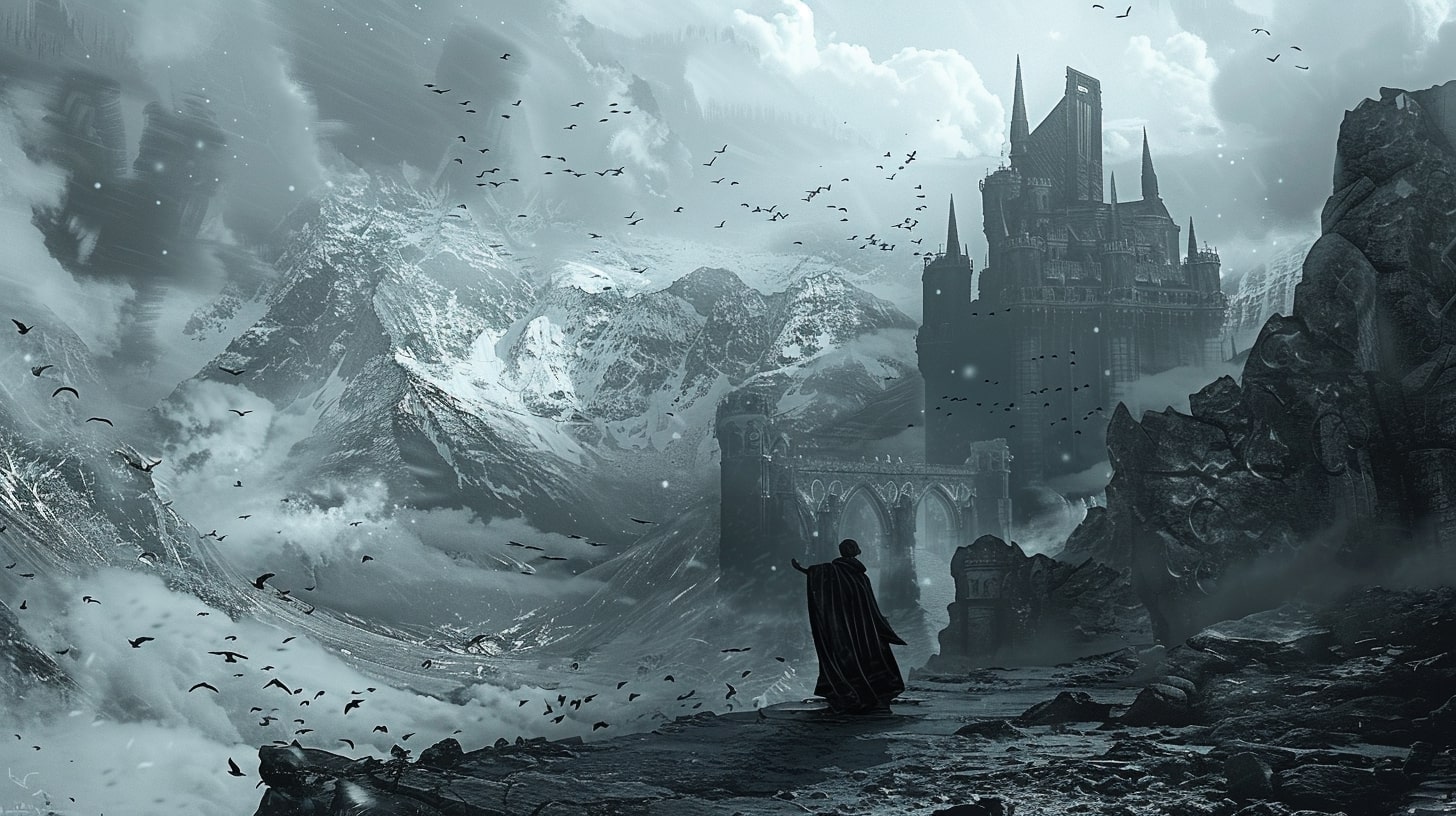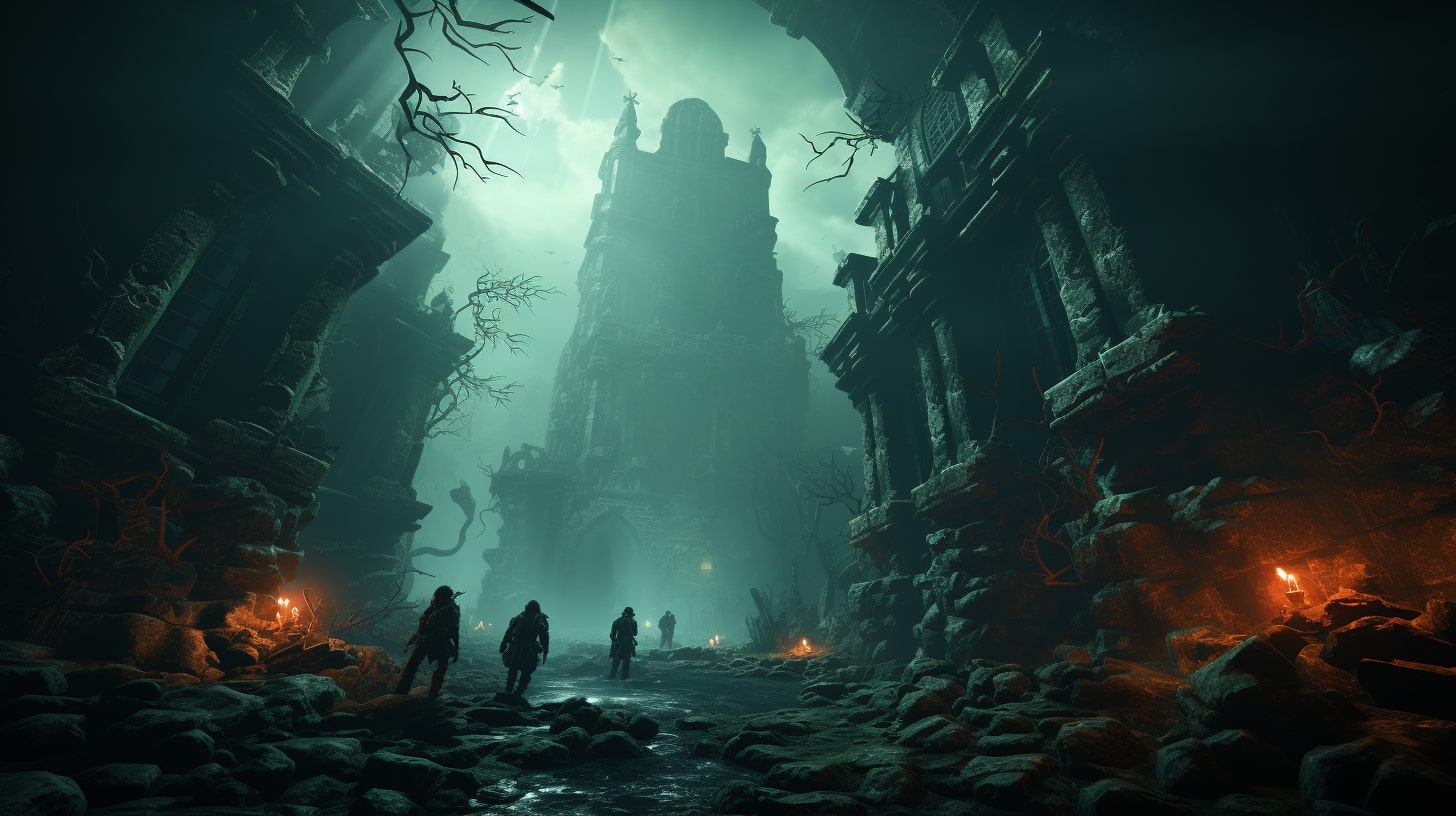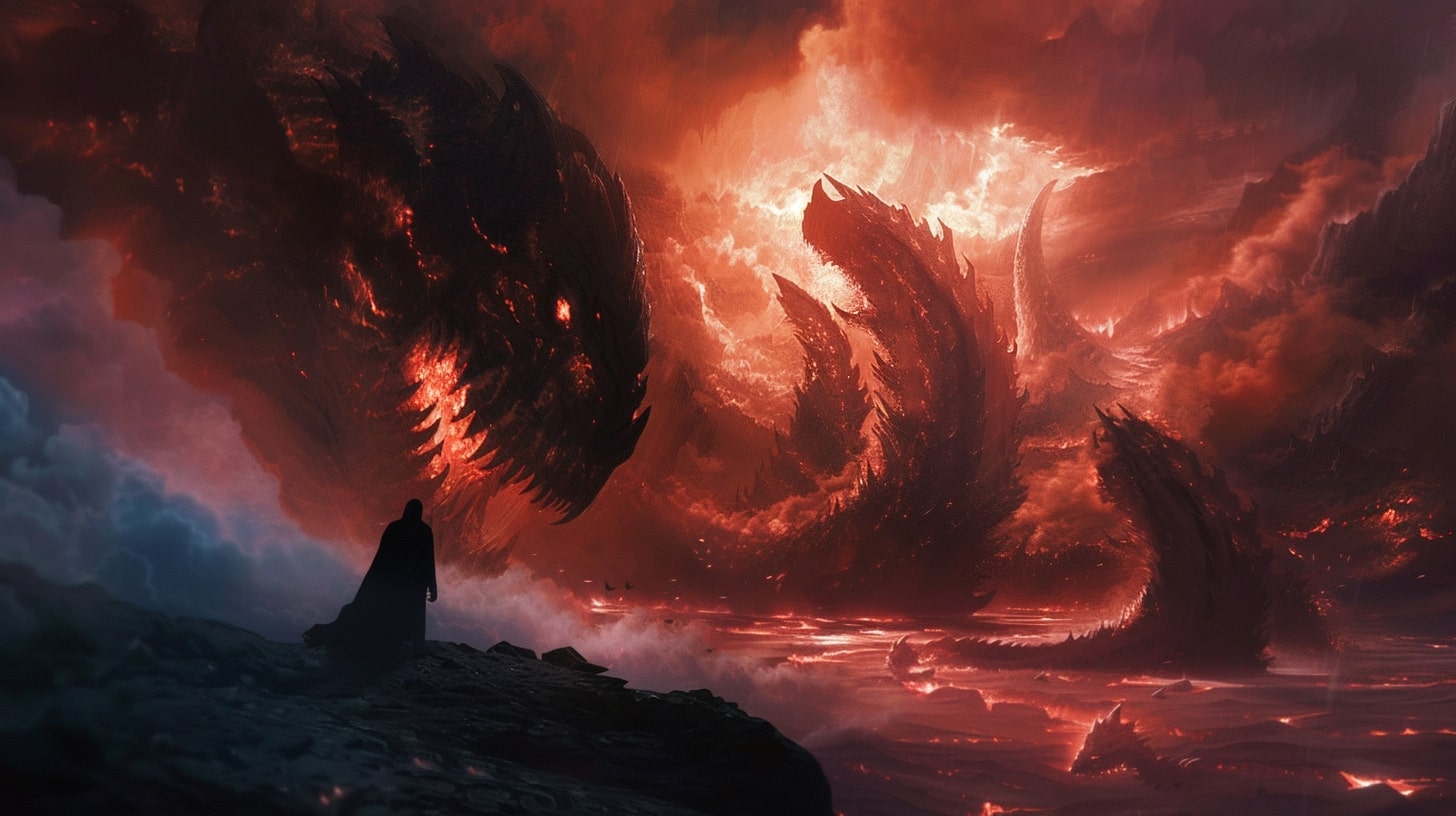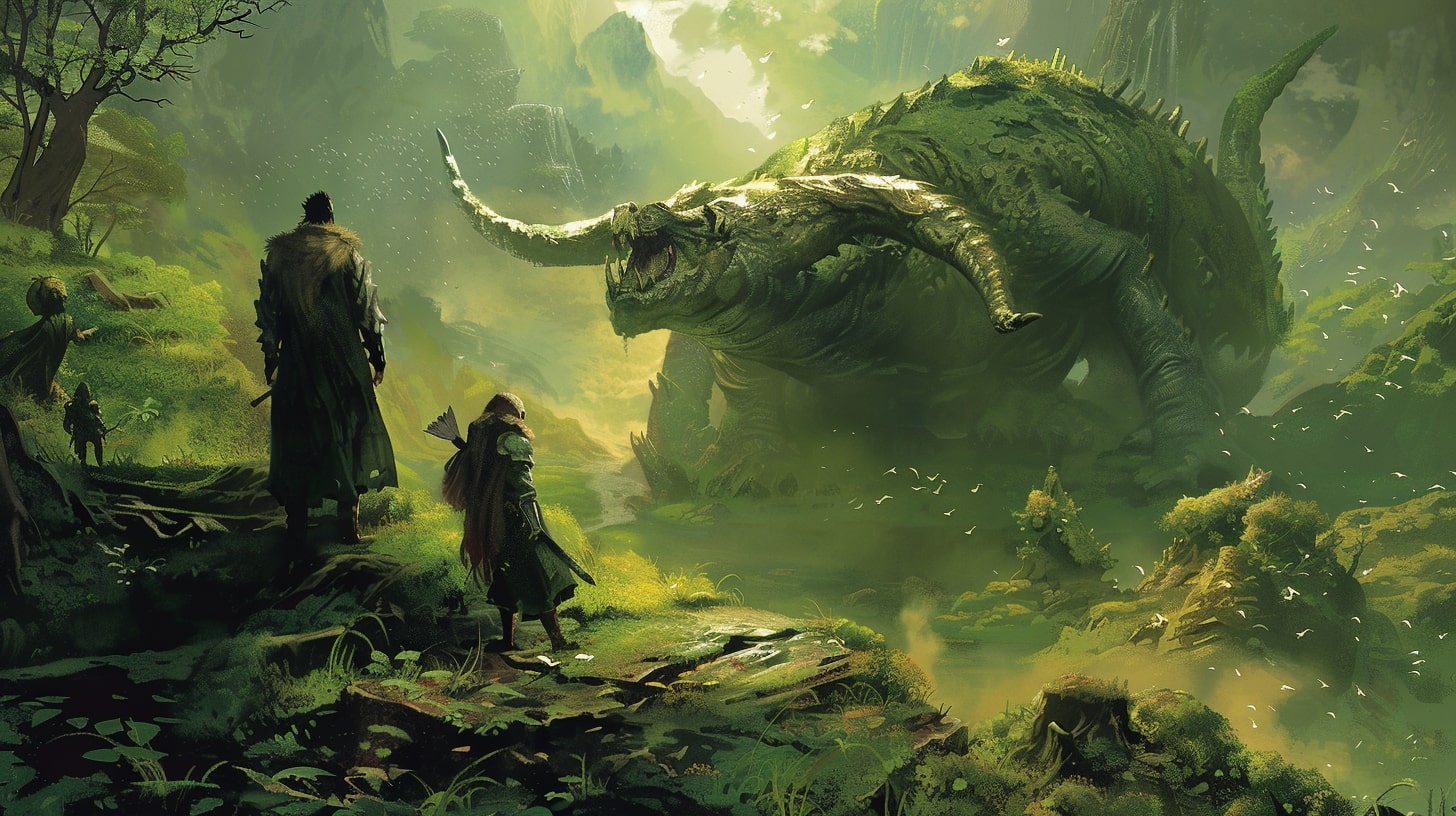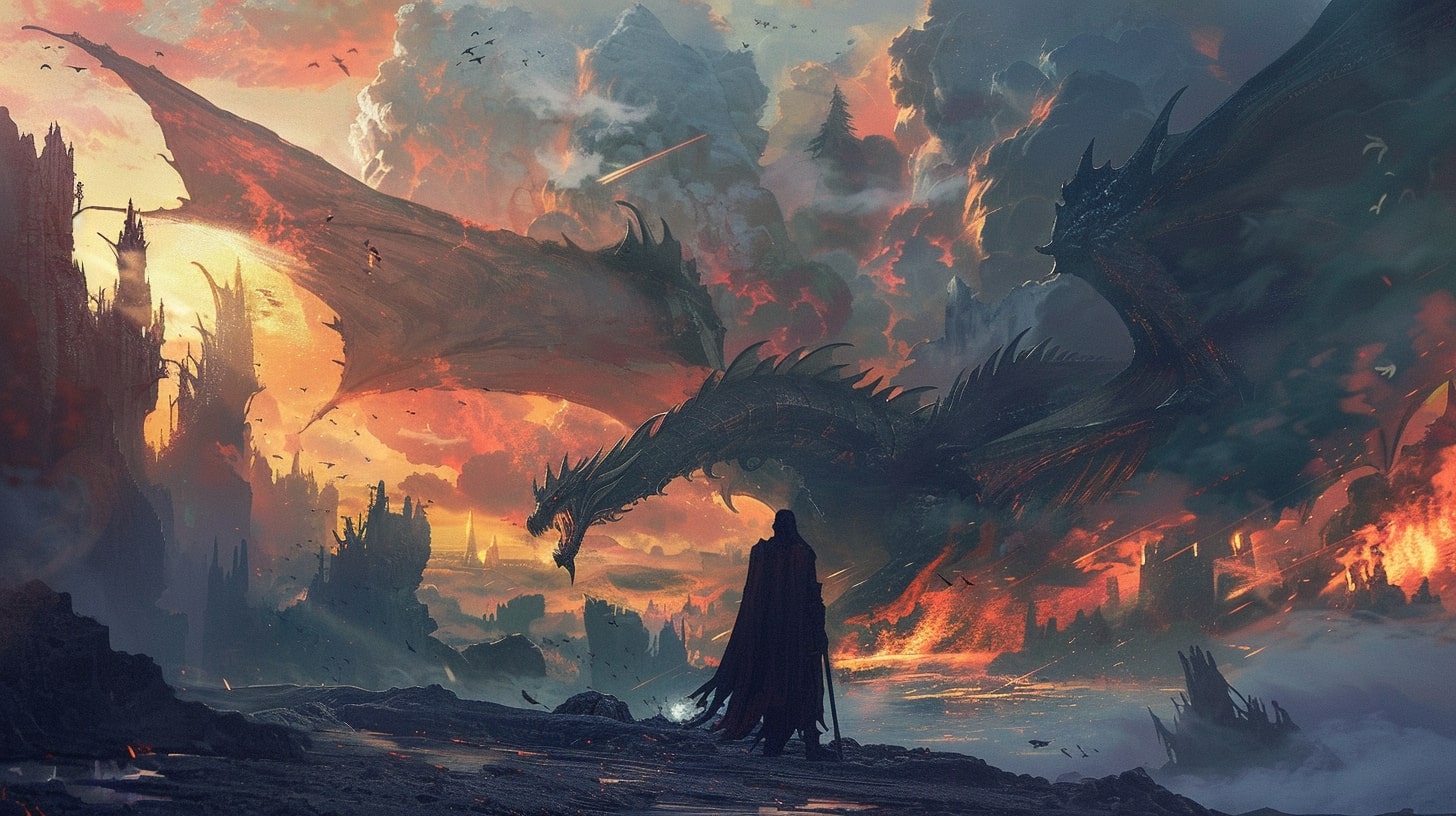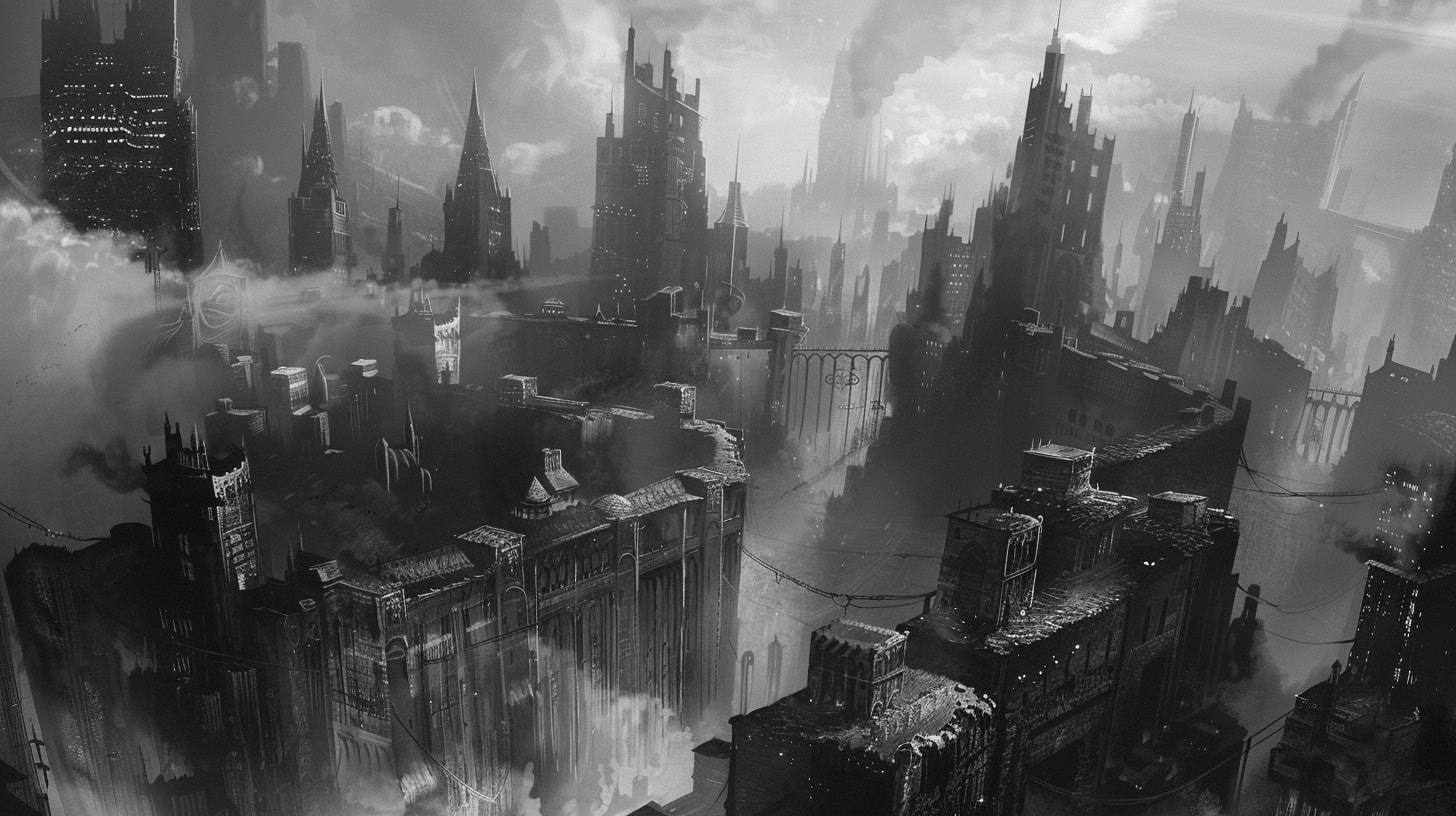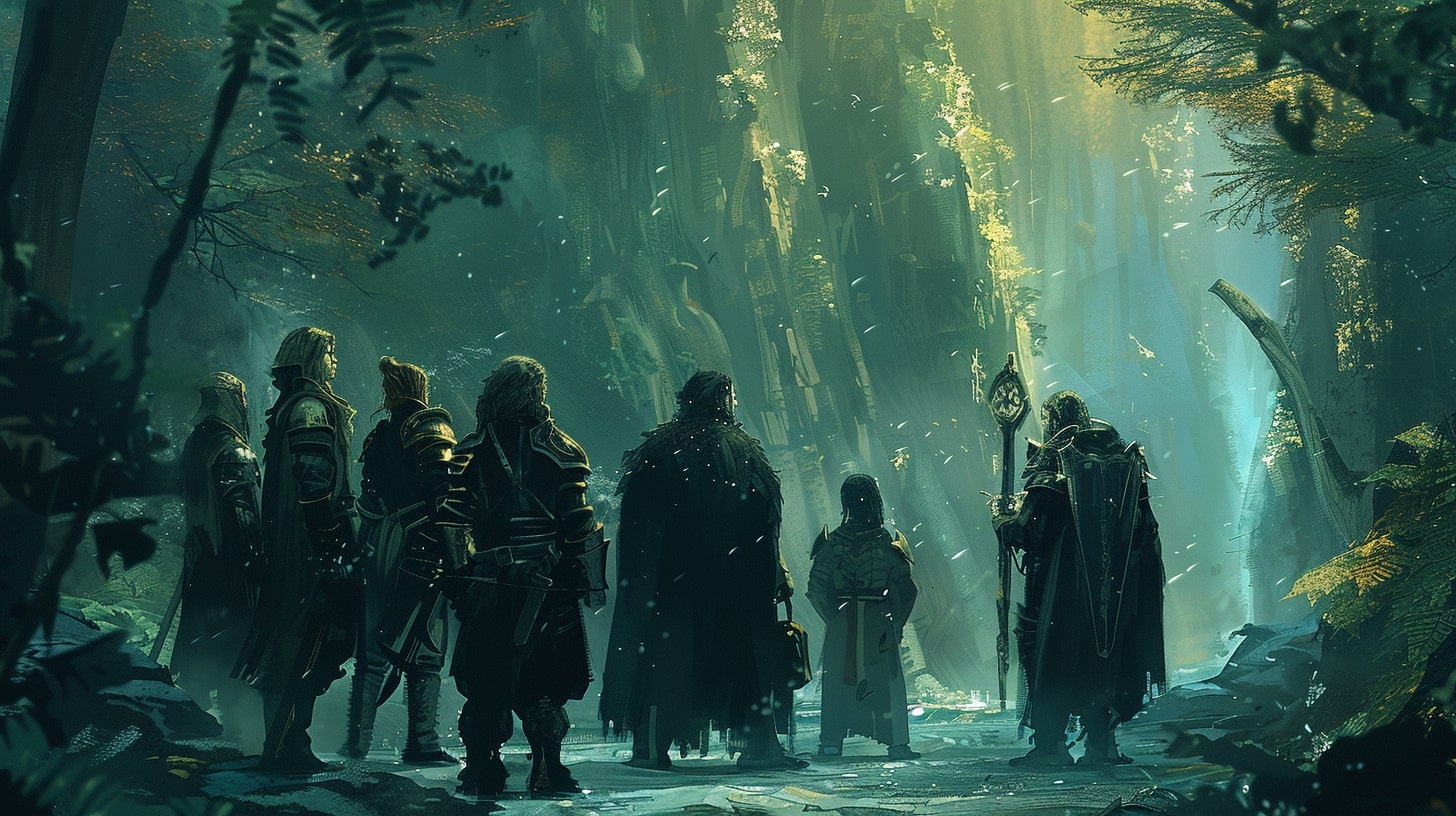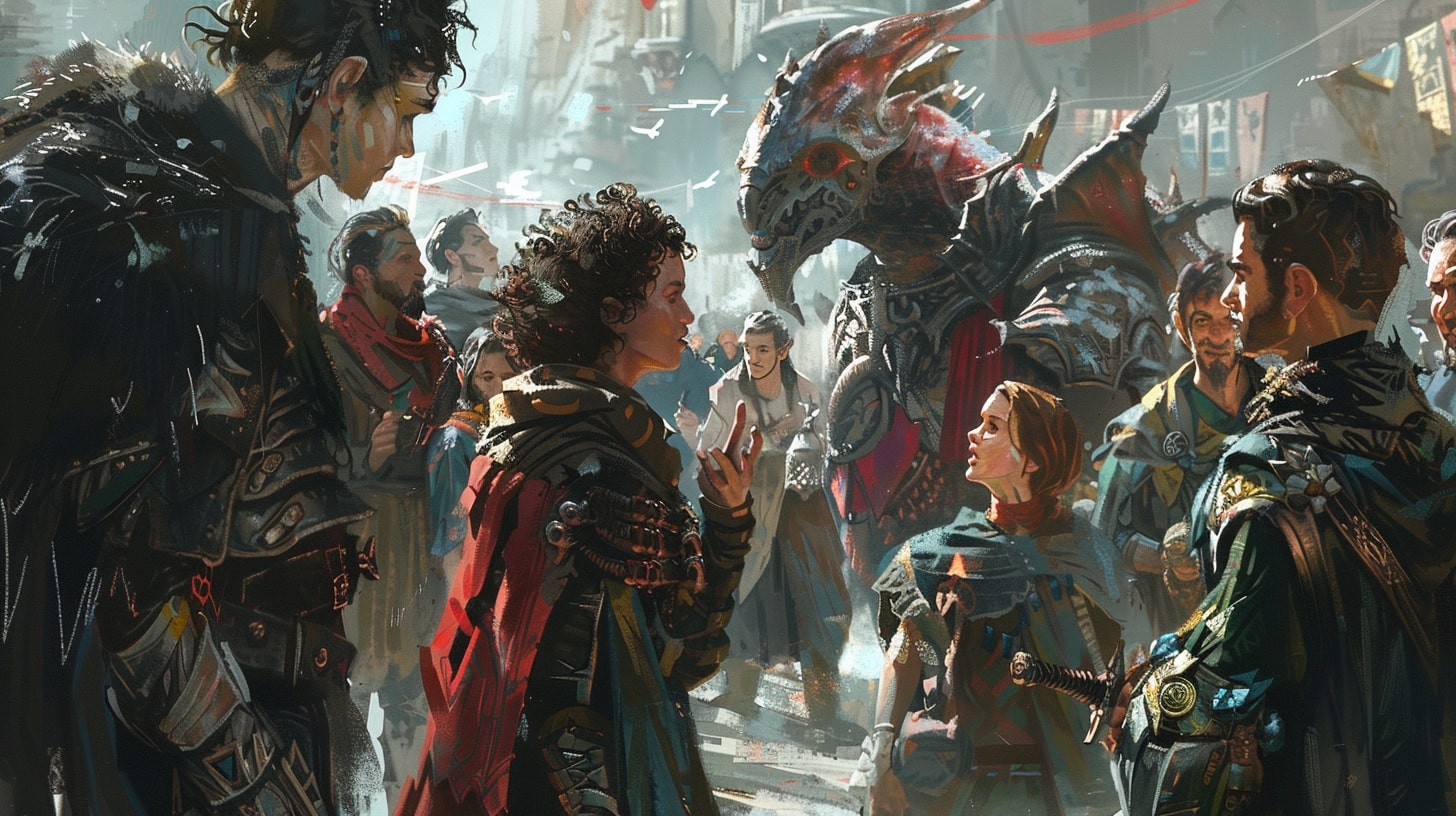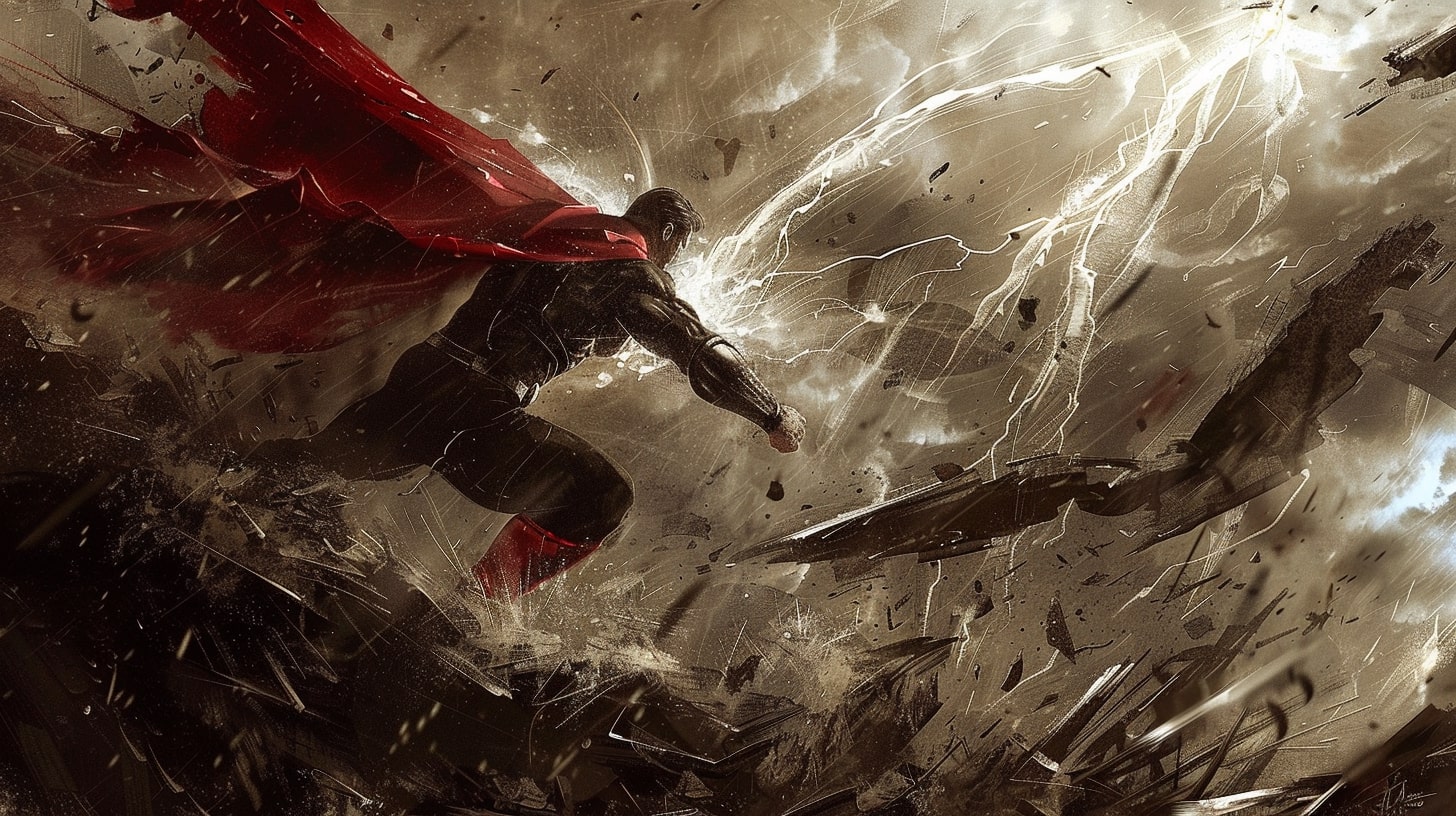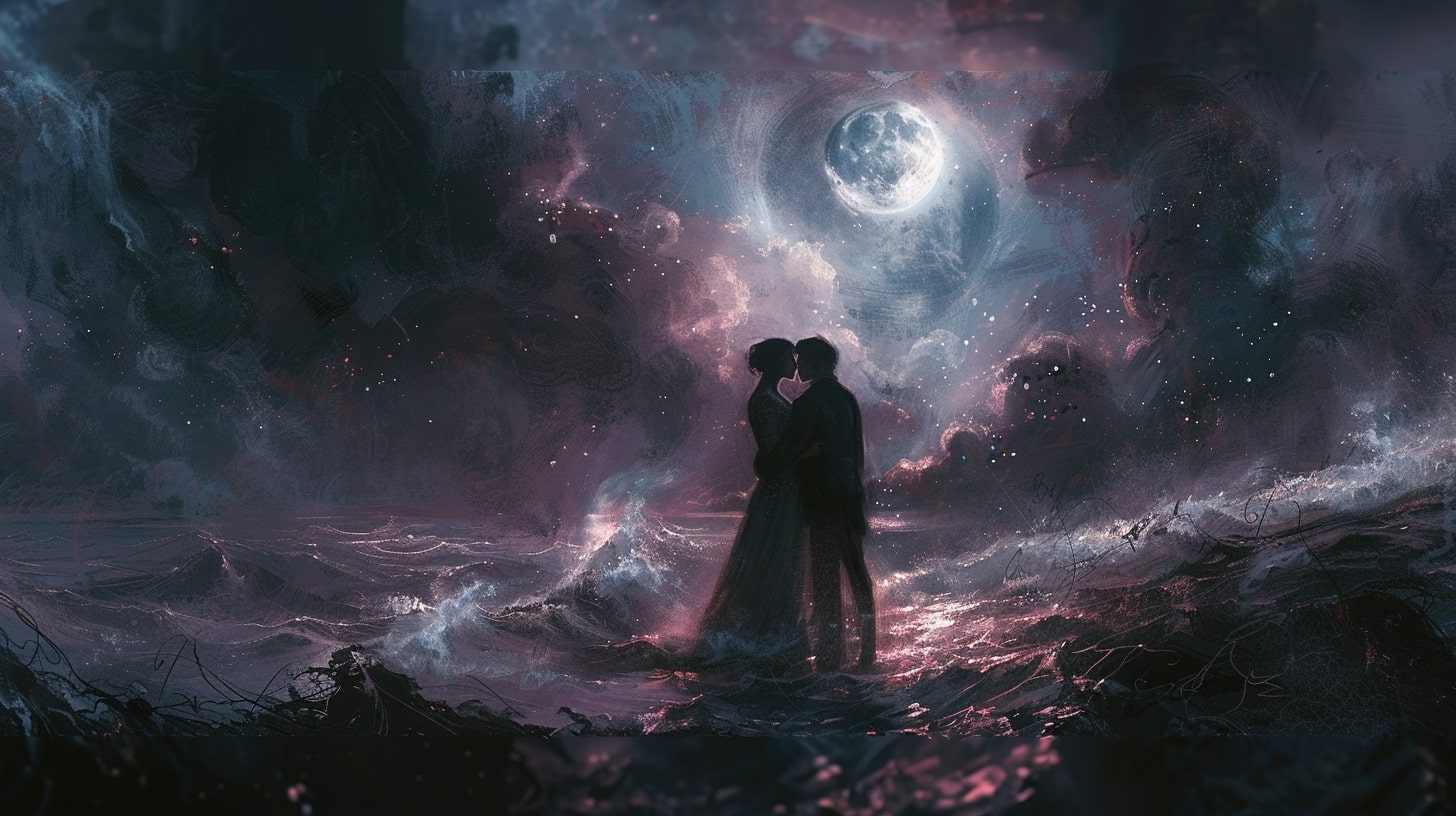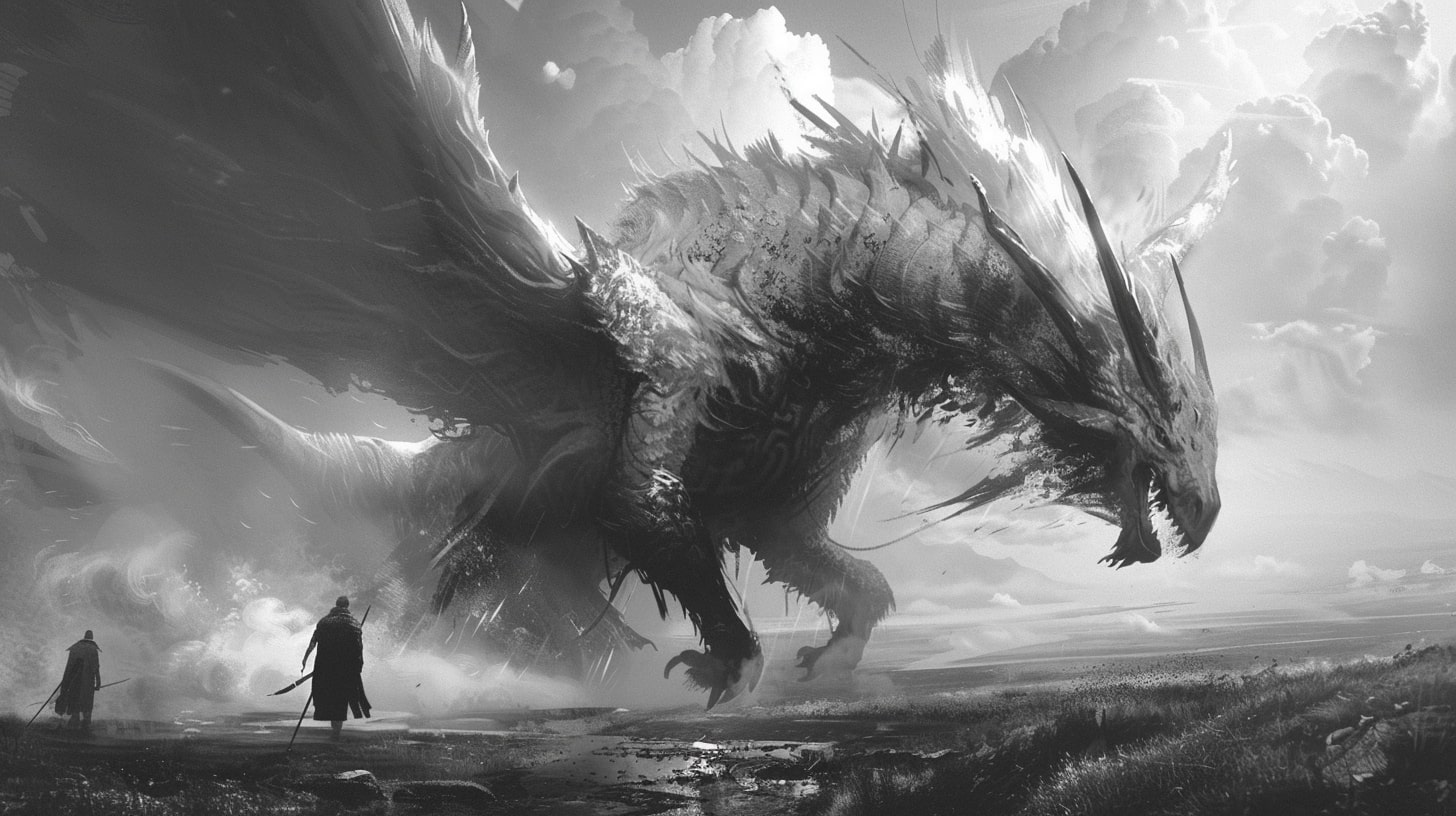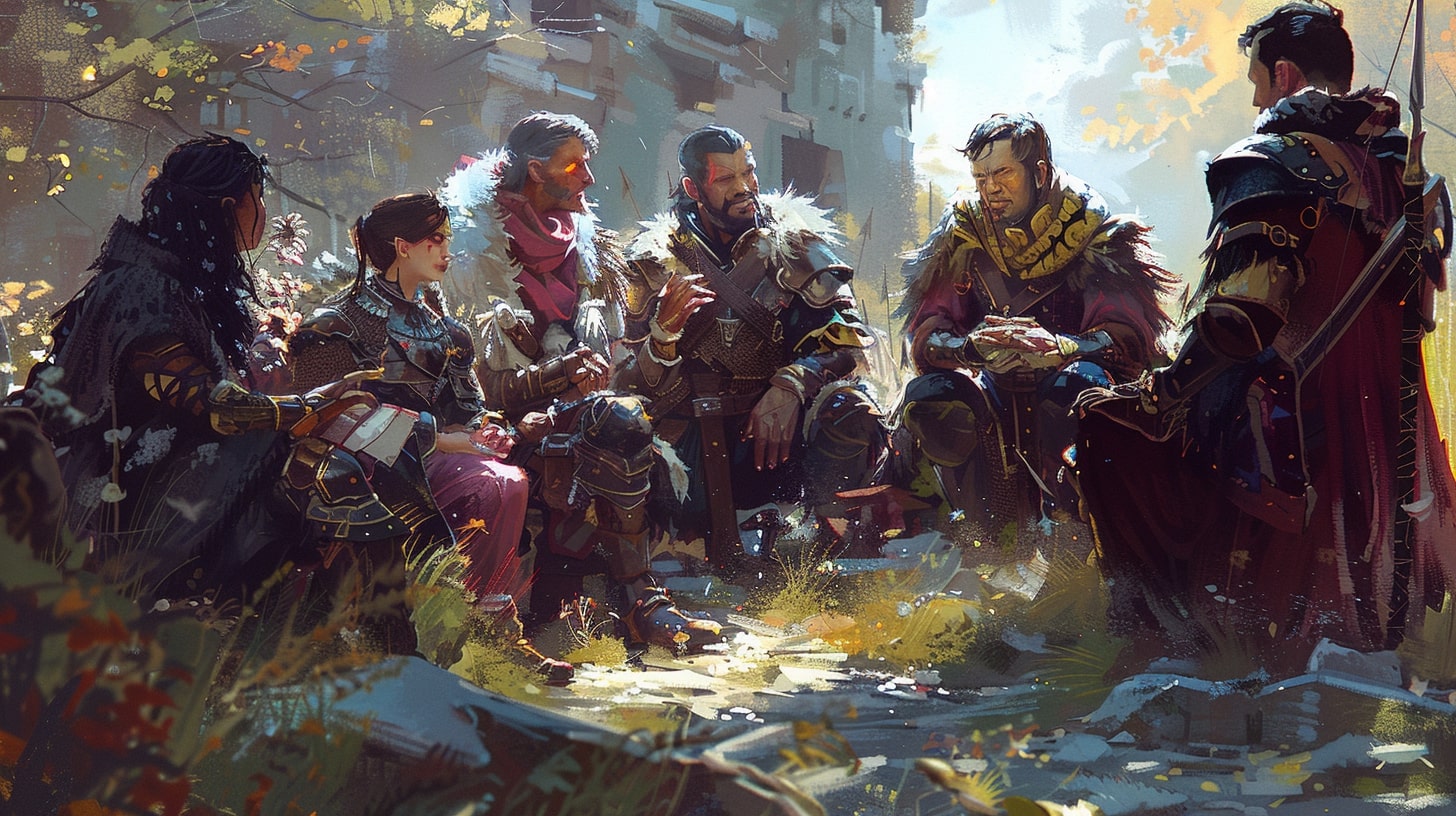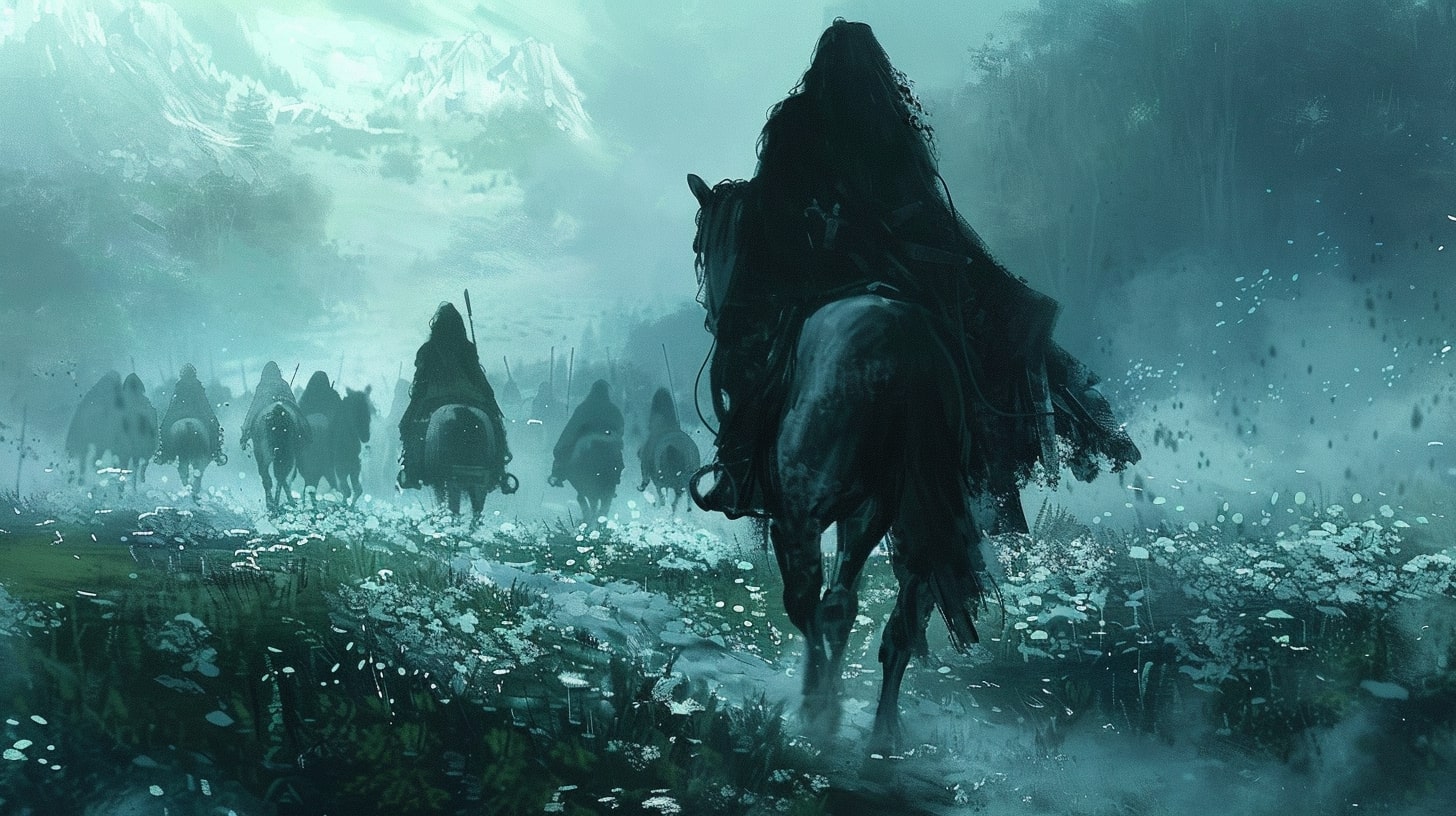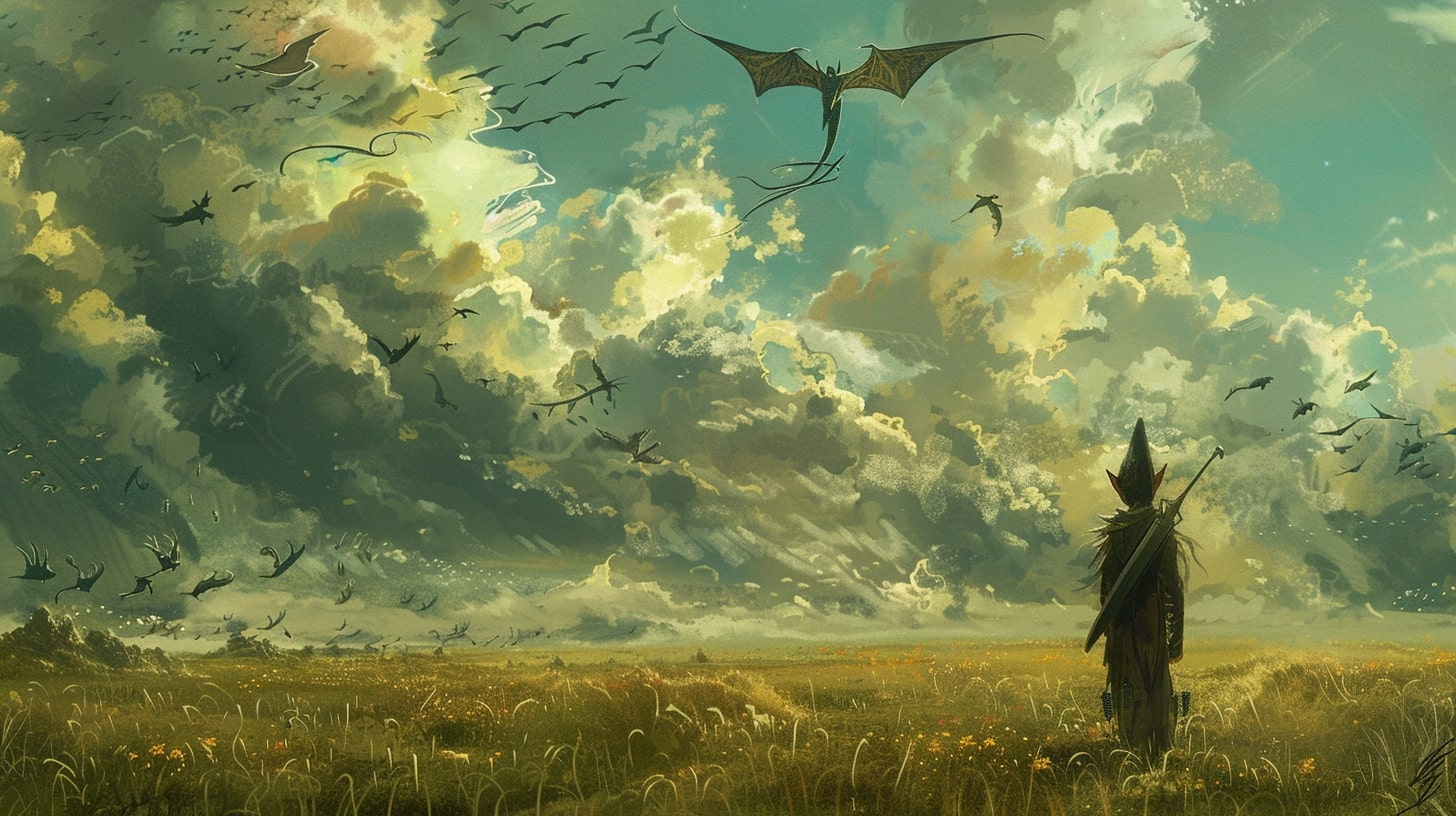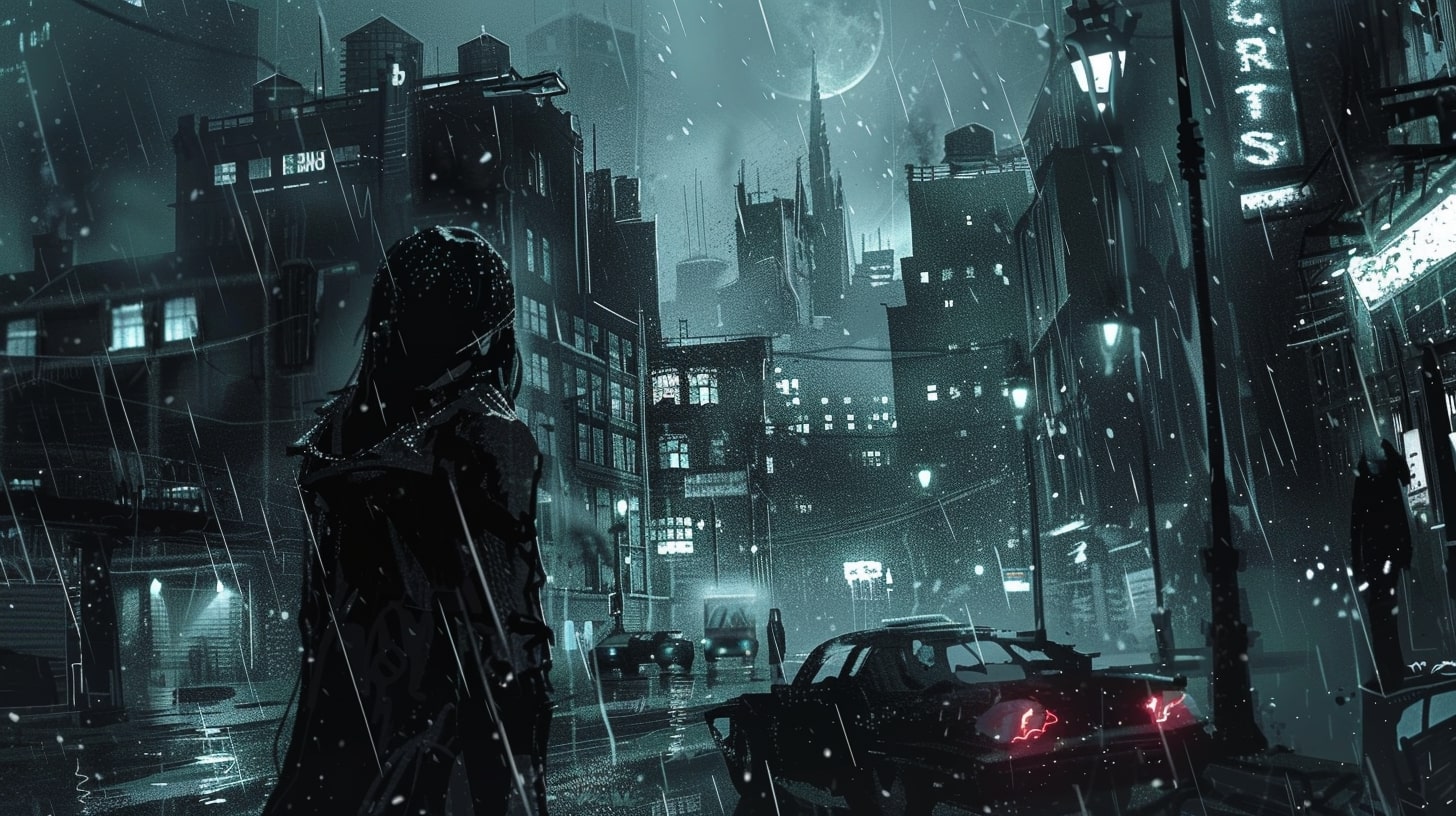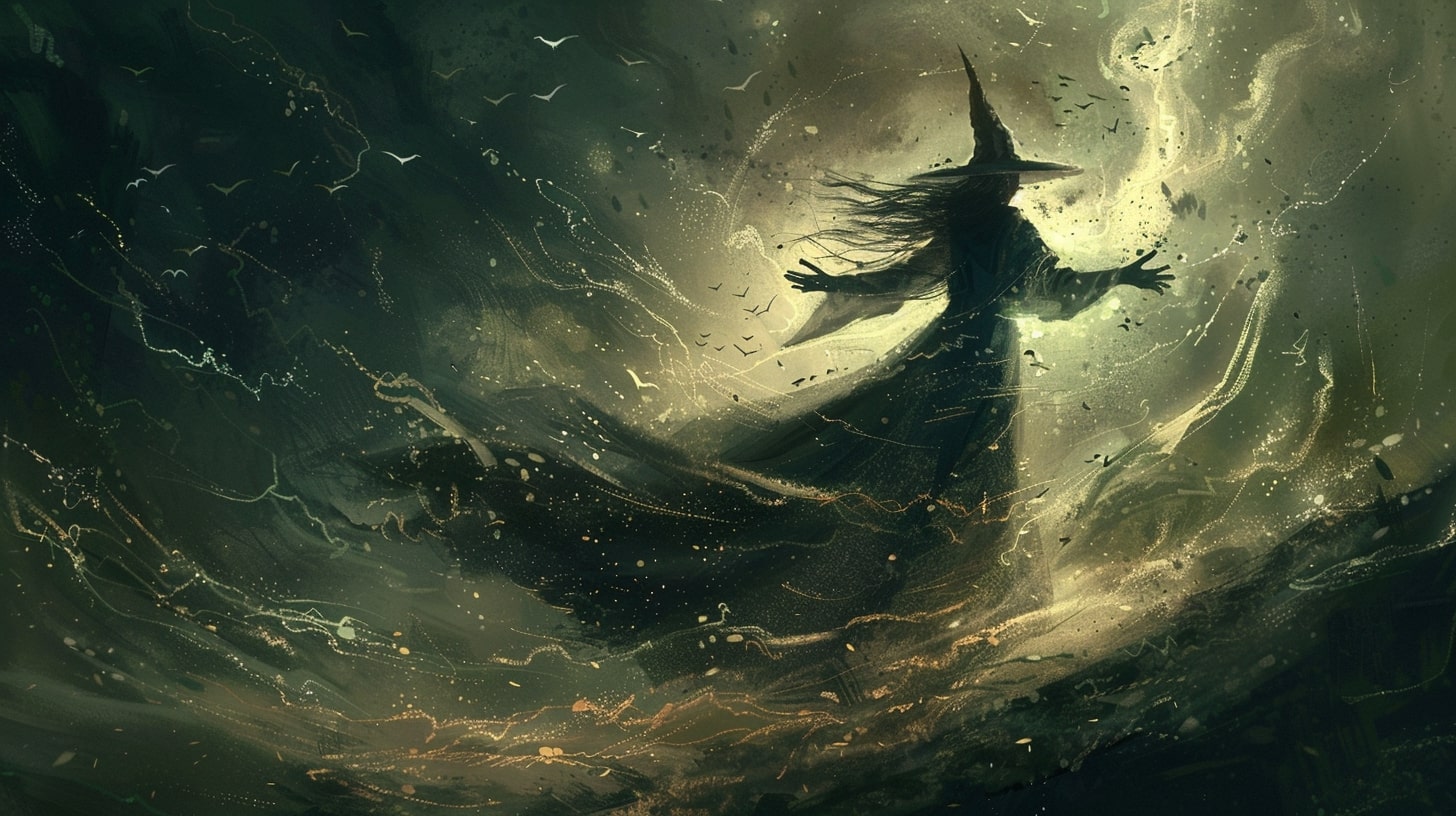Introduction to Writing Epic Fantasy
If you've ever been captivated by the realms of magic, mythical creatures, and epic adventures, then writing epic fantasy might be your calling. Crafting a world filled with wonder, danger, and larger-than-life characters is an exciting endeavor that allows you to unleash your imagination.
However, people tend to have a misconception about what epic fantasy is and how you approach it with your fantasy writing. These are all things that we are going to tackle here so let's go.
What Makes Epic Fantasy Unique?
Epic fantasy stands out as a genre that transports readers to extraordinary realms brimming with magic, mythical creatures, and heroic quests. It encompasses sprawling narratives that span multiple volumes, weaving intricate tales of good versus evil, with high stakes and grand conflicts at the forefront.
In epic fantasy, you have the freedom to create your own rules and construct a world that defies the limitations of reality.
The world-building aspect of epic fantasy is one of its defining features. As a writer, you have the opportunity to construct detailed and believable settings, complete with unique cultures, societies, and even fantasy languages. This level of creativity enables you to immerse readers in a fully realized world, taking them on a journey they won't soon forget.
Epic fantasy also allows for the exploration of complex and multi-dimensional characters. From brave heroes and cunning villains to a diverse cast of secondary characters, you have the power to breathe life into individuals who will resonate with readers long after they've finished the story.
Crafting compelling character arcs and growth is essential to creating an engaging epic fantasy narrative.
Why Write Epic Fantasy?
Writing epic fantasy is a thrilling and rewarding experience for several reasons. First and foremost, it allows you to tap into your imagination and unleash your creativity. The possibilities are endless when you're building a world from scratch, populating it with unique characters, and crafting intricate plots that will keep readers turning the pages.
Epic fantasy also offers an escape for both the writer and the reader. It provides a chance to step into a world unlike our own, where magic and adventure await at every turn.
Whether you're seeking to transport yourself to another realm or share your captivating world with others, writing epic fantasy allows you to create a sense of wonder and transport readers to a place where anything is possible.
Moreover, epic fantasy has a dedicated and enthusiastic fan base. Readers of this genre are often passionate about immersing themselves in richly imagined worlds and embarking on epic journeys.
By writing epic fantasy, you have the opportunity to connect with a community of readers who share your love for the genre and are eager to be whisked away on fantastical adventures.
So, if you're ready to embark on a writing journey filled with magic, heroism, and imagination, dive into the realm of epic fantasy and let your creativity soar. Explore the tips and techniques for writing epic fantasy and get ready to craft a tale that will captivate readers' hearts and minds.
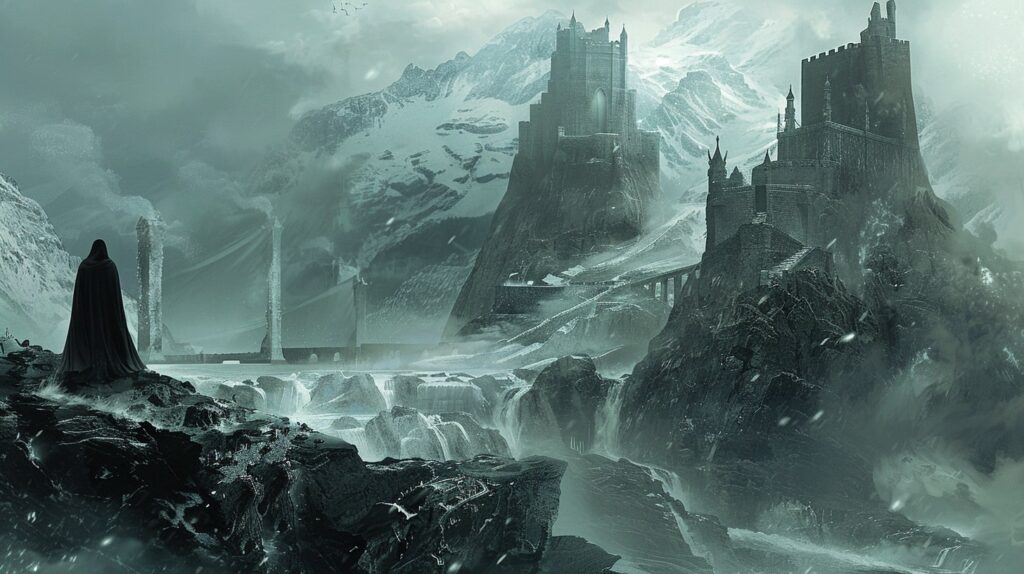
Writing Epic Fantasy: Building Your World
To create an immersive epic fantasy story, building a rich and believable world is essential. Your world will serve as the backdrop for your characters and their adventures, so it's important to invest time and effort into its creation.
In this section, we will explore three key aspects of world-building: creating a detailed and believable setting, developing unique cultures and societies, and establishing a magic system.
Creating a Detailed and Believable Setting
To bring your epic fantasy world to life, it's crucial to create a detailed and believable setting. This includes crafting the geography, landmarks, and climate of your world. Consider creating maps to visualize the various regions and their relationships to one another. Think about how the geography influences the cultures, economies, and conflicts within your world.
Additionally, pay attention to the flora and fauna that inhabit your world. Describe unique plant life, mythical creatures, and fantastical beings that add depth and intrigue to your setting. By providing vivid and descriptive details, you can transport your readers into your epic fantasy world.
Developing Unique Cultures and Societies
Another important aspect of world-building is developing unique cultures and societies. Consider the diverse peoples that inhabit your world and the traditions, values, and beliefs that shape their way of life. Think about their social structures, governance systems, and interactions with other cultures.
To make your cultures feel authentic, draw inspiration from real-world societies, but infuse them with your own creative twists. Explore the customs, rituals, and languages of your fictional cultures to add depth and realism. Remember to avoid cultural stereotypes and strive for diversity and inclusivity in your world.
Establishing a Magic System
Magic is often a central element in epic fantasy, so establishing a coherent and well-defined magic system is crucial. Decide how magic works in your world and establish clear rules and limitations. Consider the source of magic, whether it's derived from elements, deities, or innate abilities.
Define the different types of magic and the abilities associated with them. Determine how magic users are trained and the role they play in society. By establishing a consistent and logical magic system, you can create tension, conflicts, and powerful moments within your story.
Remember, world-building is an ongoing process, and you can continue to expand and refine your epic fantasy world as you write. For more tips and inspiration on writing epic fantasy, check out our articles on how to write fantasy novels and fantasy writing tips.
In the next section, we will delve into the art of crafting memorable characters that will captivate your readers and drive your epic fantasy story forward.

Crafting Memorable Characters
In the realm of writing epic fantasy, memorable characters play a vital role in captivating readers and immersing them in your fantastical world. To create characters that resonate with your audience, you must invest time and effort into developing protagonists and antagonists, crafting well-rounded secondary characters, and exploring character arcs and growth.
Developing Protagonists and Antagonists
The protagonists of your epic fantasy story are the heroes who drive the narrative forward. They should possess unique qualities, strengths, and weaknesses that make them relatable and compelling.
Consider their motivations, desires, and conflicts, and how they evolve throughout the story. This evolution can be represented through their character arcs, as they overcome challenges and grow as individuals.
On the flip side, your story needs formidable antagonists to provide conflict and opposition. Antagonists should be more than simply evil; they should have depth and complexity. Develop their backstory, motivations, and goals, allowing readers to understand their perspective. By creating well-rounded antagonists, you add depth to your story and make the conflicts more engaging.
Creating Well-Rounded Secondary Characters
While protagonists and antagonists may take center stage, don't overlook the importance of well-rounded secondary characters. These characters add depth, provide support or opposition, and contribute to the overall richness of your story.
Each secondary character should have their own unique traits, quirks, and motivations that affect the plot or influence the development of the main characters.
Consider the relationships between your secondary characters and the main characters. How do they interact? Do they provide guidance, serve as mentors, or act as foils? By carefully crafting these relationships, you enhance the dynamics and complexity of your story, making it more engaging for readers.
Exploring Character Arcs and Growth
Character arcs are essential for the growth and development of your characters throughout the epic fantasy tale. They allow readers to witness the transformation of the characters as they face challenges, make choices, and learn valuable lessons.
Character growth can be physical, emotional, or psychological, and should be reflected in their actions, beliefs, and values.
To create compelling character arcs, consider the internal and external conflicts your characters encounter. How do these conflicts shape their choices and actions?
What lessons do they learn along the way? By exploring the growth of your characters, you provide a satisfying narrative arc that keeps readers engaged and invested in their journey.
By focusing on crafting memorable characters in your epic fantasy story, you breathe life into your world and create connections with your readers.
Developing well-rounded protagonists and antagonists, creating dynamic secondary characters, and exploring character arcs and growth will ensure that your characters resonate long after the story ends. For more tips on writing fantasy fiction, check out our article on how to write fantasy novels.

Plotting an Epic Adventure
In the realm of epic fantasy, a captivating and thrilling adventure is at the heart of every great story. To create an engaging narrative, it's important to develop a well-structured plot that keeps readers on the edge of their seats.
In this section, we will explore key elements of plotting an epic adventure, including outlining the hero's journey, incorporating subplots and twists, and balancing action, conflict, and tension.
Outlining the Hero's Journey
The hero's journey is a classic storytelling framework that forms the backbone of many epic fantasy tales. It takes the protagonist on a transformative and perilous quest, filled with challenges, growth, and self-discovery. To outline the hero's journey, consider the following key stages:
- The Call to Adventure: The protagonist is presented with a challenge or opportunity that sets them on the path of their journey.
- Refusing the Call: Initially, the protagonist may resist or doubt their ability to embark on the adventure, but eventually accepts the call.
- Crossing the Threshold: The protagonist leaves their familiar world behind and enters the unknown, venturing into a new and fantastical realm.
- Trials and Challenges: Throughout the journey, the protagonist faces various obstacles, tests, and encounters that shape their character and abilities.
- The Abyss: The protagonist reaches a critical moment of crisis, where they face their greatest challenge or personal revelation.
- Transformation and Atonement: The protagonist undergoes a profound change, learns from their experiences, and emerges stronger and wiser.
- Return and Resolution: The protagonist returns to their familiar world, bringing with them newfound wisdom, gifts, or treasures.
By following the hero's journey framework, you can create a compelling narrative that resonates with readers. For more in-depth tips on outlining a fantasy novel, check out our article on outlining a fantasy novel.
Incorporating Subplots and Twists
To add depth and complexity to your epic adventure, it's important to incorporate subplots and twists. Subplots provide additional storylines that intersect with the main plot, offering new perspectives, character development, and unexpected challenges. They can involve secondary characters, side quests, or parallel storylines that enhance the overall narrative.
Twists, on the other hand, introduce unexpected turns of events that surprise and engage readers. They can involve revelations about a character's true identity, sudden betrayals, or unforeseen plot developments. Well-executed twists keep readers guessing and invested in the story.
When incorporating subplots and twists, it's essential to ensure they are seamlessly woven into the main narrative and contribute to its progression. They should enhance the overall story arc, deepen character relationships, and provide opportunities for tension and conflict. However, it's important to strike a balance and avoid overwhelming the reader with too many subplots or excessive twists.
Balancing Action, Conflict, and Tension
In an epic adventure, a delicate balance of action, conflict, and tension is crucial to keep readers engrossed. Action scenes provide excitement and propel the story forward, while conflict creates stakes and drives character development. Tension, on the other hand, keeps readers on the edge of their seats, eager to discover the outcome of key events.
To maintain a compelling balance, consider the following:
- Pacing: Alternate between action-packed sequences and quieter moments of reflection or character development to create a dynamic rhythm.
- Stakes: Raise the stakes for your characters by introducing higher risks, greater challenges, and deeper emotional consequences.
- Foreshadowing: Use foreshadowing to hint at future conflicts or events, building anticipation and suspense.
- Cliffhangers: End chapters or sections with cliffhangers to keep readers eagerly turning pages, desperate to know what happens next.
By skillfully balancing action, conflict, and tension, you can create an epic adventure that keeps readers engaged from beginning to end.
Plotting an epic adventure is an essential aspect of crafting an enthralling epic fantasy novel. By outlining the hero's journey, incorporating subplots and twists, and balancing action, conflict, and tension, you can create a narrative that captivates readers and transports them to a world of wonder.
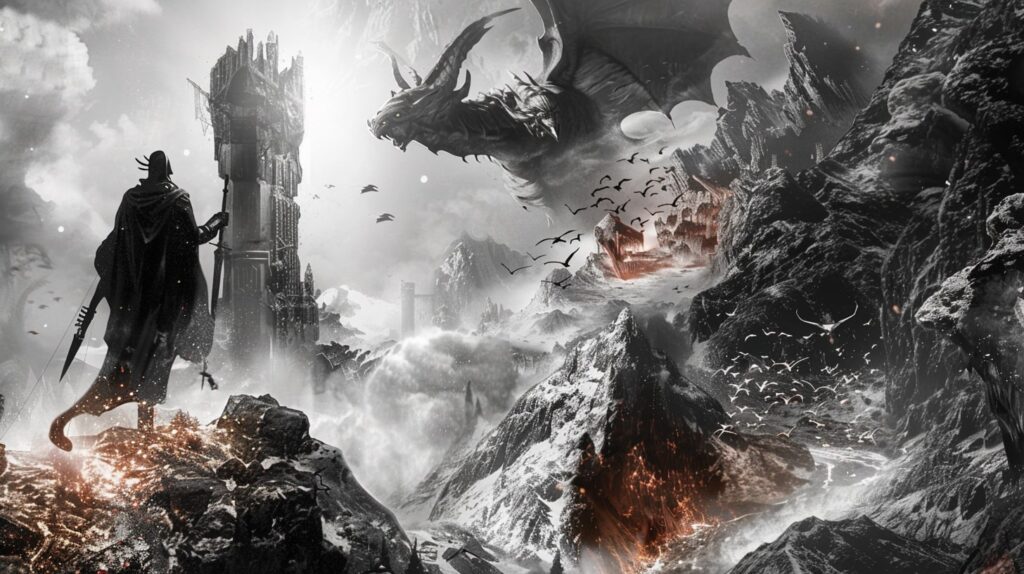
Writing Engaging Dialogue
When it comes to writing engaging dialogue in your epic fantasy novel, it's essential to give your characters distinct voices, use dialogue to reveal information and advance the plot, and strike a balance between dialogue and narrative descriptions.
Giving Characters Distinct Voices
To make your characters come alive on the page, it's crucial to give each of them a distinct voice. This means crafting dialogue that reflects their personality, background, and motivations. Consider their speech patterns, vocabulary, and dialects.
Perhaps one character speaks formally with eloquent and poetic language, while another character uses slang and colloquialisms. By creating unique voices, you bring diversity and authenticity to your character interactions.
Using Dialogue to Reveal Information and Advance the Plot
Dialogue is a powerful tool for revealing information and advancing the plot in your epic fantasy novel. It can convey important details about the world, the characters, and their relationships.
Through conversations between characters, you can introduce backstory, foreshadow events, and establish conflicts. Remember to show, not tell, by allowing the dialogue to naturally unfold and reveal information through subtext and character dynamics.
Additionally, dialogue can be used to convey emotions and heighten tension. By showing characters' thoughts, desires, and fears through their words, you create a deeper connection between the reader and the story. Use dialogue to create suspense, conflict, and moments of revelation that drive the narrative forward.
Balancing Dialogue with Narrative Descriptions
While dialogue is important for character development and storytelling, it's crucial to balance it with narrative descriptions. Descriptive passages allow readers to visualize the scene, understand the characters' physical actions, and interpret non-verbal cues. This helps create a well-rounded experience and prevents dialogue from becoming overwhelming or disjointed.
Introduce narrative descriptions between dialogue exchanges to provide context, set the scene, and enhance the reader's understanding of the characters' emotions and surroundings.
Use sensory details to bring your epic fantasy world to life, engaging the reader's senses and immersing them in the story. For more tips on crafting vivid and immersive settings, check out our article on building a fantasy world.
Remember, writing engaging dialogue is a skill that can be honed with practice. Experiment with different dialogue techniques, study how your favorite authors handle conversations, and seek feedback from readers or writing communities.
By giving your characters distinct voices, using dialogue to reveal information and advance the plot, and finding the right balance with narrative descriptions, you can create compelling and captivating dialogue that brings your epic fantasy world to life.
Worldbuilding Beyond Words
To truly immerse your readers in your epic fantasy world, it's important to go beyond words and engage their senses. Describing the sights, sounds, and smells of your fantastical realm can transport your readers to another dimension. In this section, we will explore how to describe sights, sounds, and smells, engage the reader's senses, and craft vivid and immersive settings.
Describing Sights, Sounds, and Smells
When describing your epic fantasy world, make use of vivid and descriptive language to paint a detailed picture in the reader's mind. Engage their visual senses by using colorful adjectives and metaphors to bring your settings to life. Describe the breathtaking landscapes, towering castles, bustling marketplaces, or eerie forests in a way that transports the reader into the heart of the scene.
Incorporate sounds that evoke the atmosphere of your world. Whether it's the echoes of clashing swords in an epic battle or the melodic chirping of fantastical creatures in a mystical forest, use onomatopoeia and descriptive language to capture the essence of these sounds.
Don't forget to include olfactory descriptions to engage your reader's sense of smell. Describe the scent of freshly baked bread wafting from a village bakery or the acrid smell of burning embers in a war-torn city. By adding these olfactory details, you can create a more immersive experience for your readers.
Engaging the Reader's Senses
Engaging the reader's senses goes beyond visual, auditory, and olfactory descriptions. Consider incorporating the other senses as well, such as touch and taste, to create a multi-dimensional experience.
Describe the texture of objects or settings, whether it's the roughness of stone walls in a fortress or the softness of a character's velvet cloak. By providing tactile details, you can make your world feel more tangible and real to the reader.
Additionally, consider incorporating taste sensations into your descriptions. Whether it's the sweetness of a magical fruit or the bitterness of a potion, describing flavors can add depth to your world and make it more relatable to your readers.
Crafting Vivid and Immersive Settings
To craft vivid and immersive settings, it's important to pay attention to details. Consider the geography, climate, and architecture of your world. Is it a lush tropical paradise, a frigid mountain range, or a sprawling desert? Describe these elements in a way that transports the reader to these unique environments.
Think about the cultural aspects of your world as well. How do the inhabitants dress? What are their customs and traditions? Incorporate these details into your descriptions to create a rich and diverse world that feels alive.
Remember to balance your descriptive passages with the progression of the story. While it's important to create a vivid setting, be mindful not to overwhelm the reader with excessive detail. Use descriptive language strategically to enhance the narrative and engage the reader's imagination.
By describing sights, sounds, and smells, engaging the reader's senses, and crafting vivid and immersive settings, you can transport your readers into the heart of your epic fantasy world. Immerse them in the rich tapestry of your imagination, and let your words transport them on an unforgettable journey.
Polishing Your Epic Fantasy Manuscript
Now that you've completed the initial draft of your epic fantasy manuscript, it's time to focus on the polishing process. This stage involves refining your writing to ensure consistency, improving the flow of dialogue and narration, and seeking valuable feedback for revisions.
Editing for Consistency and Continuity
During the editing phase, it's crucial to review your epic fantasy manuscript for consistency and continuity. Pay attention to details such as character names, locations, and plot points to ensure they remain consistent throughout the story. Keep track of any worldbuilding elements, magical systems, or rules you've established, and ensure they are maintained throughout the narrative.
To maintain continuity, consider creating a style guide or story bible. This document can serve as a reference for important details, allowing you to easily cross-reference and maintain consistency as you edit. Additionally, use tools like spell-check and grammar-check to catch any errors or inconsistencies in your writing.
Refining Dialogue and Narrative Flow
The flow of dialogue and narrative is vital in an epic fantasy manuscript. As you polish your work, focus on refining these aspects to captivate your readers. Ensure that your characters' dialogue sounds natural and distinct by giving each character their own voice.
This helps readers easily differentiate between characters and adds depth to their personalities. For more tips on writing engaging dialogue, check out our article on writing fantasy dialogue.
In terms of narrative flow, pay attention to the pacing of your story. Does the plot progress smoothly, with a balance of action, conflict, and tension? Consider incorporating subplots and twists to keep readers engaged. These elements can add depth to your story and help prevent predictability.
Craft each scene with care, making sure it contributes to the overall narrative. For guidance on plotting an epic adventure, refer to our article on crafting fantasy adventures.
Seeking Feedback and Revisions
Once you've edited your manuscript for consistency and refined the dialogue and narrative flow, it's time to seek feedback and embark on the revision process. Feedback from beta readers, writing groups, or professional editors can provide valuable insights and fresh perspectives on your work.
Consider joining writing communities or seeking out fellow writers who can offer constructive criticism. Their feedback can help you identify areas that may need improvement and guide you in making necessary revisions.
During the revision process, be open to making changes and reworking sections of your manuscript. Remember that revision is an essential part of the writing journey, and it often leads to stronger and more compelling storytelling. Take the time to address the feedback you receive and implement necessary revisions to enhance your epic fantasy manuscript.
As you continue to polish your epic fantasy manuscript, remember to stay true to your vision while remaining open to constructive feedback. The path to creating a captivating and immersive world lies in the dedication and effort you put into refining your writing. Good luck on your epic fantasy writing journey!

